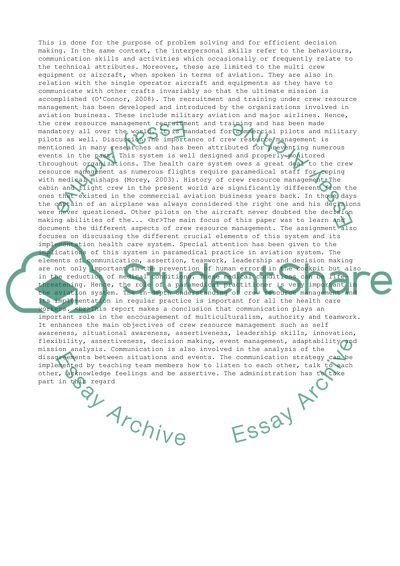Cite this document
(“Crew Resource Management Essay Example | Topics and Well Written Essays - 3250 words”, n.d.)
Crew Resource Management Essay Example | Topics and Well Written Essays - 3250 words. Retrieved from https://studentshare.org/management/1491882-crew-resource-management
Crew Resource Management Essay Example | Topics and Well Written Essays - 3250 words. Retrieved from https://studentshare.org/management/1491882-crew-resource-management
(Crew Resource Management Essay Example | Topics and Well Written Essays - 3250 Words)
Crew Resource Management Essay Example | Topics and Well Written Essays - 3250 Words. https://studentshare.org/management/1491882-crew-resource-management.
Crew Resource Management Essay Example | Topics and Well Written Essays - 3250 Words. https://studentshare.org/management/1491882-crew-resource-management.
“Crew Resource Management Essay Example | Topics and Well Written Essays - 3250 Words”, n.d. https://studentshare.org/management/1491882-crew-resource-management.


